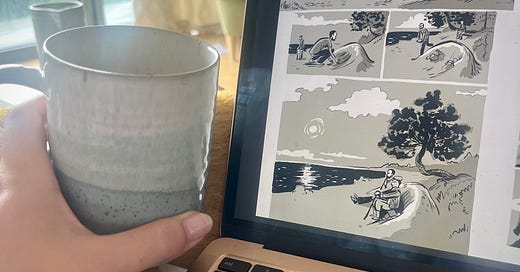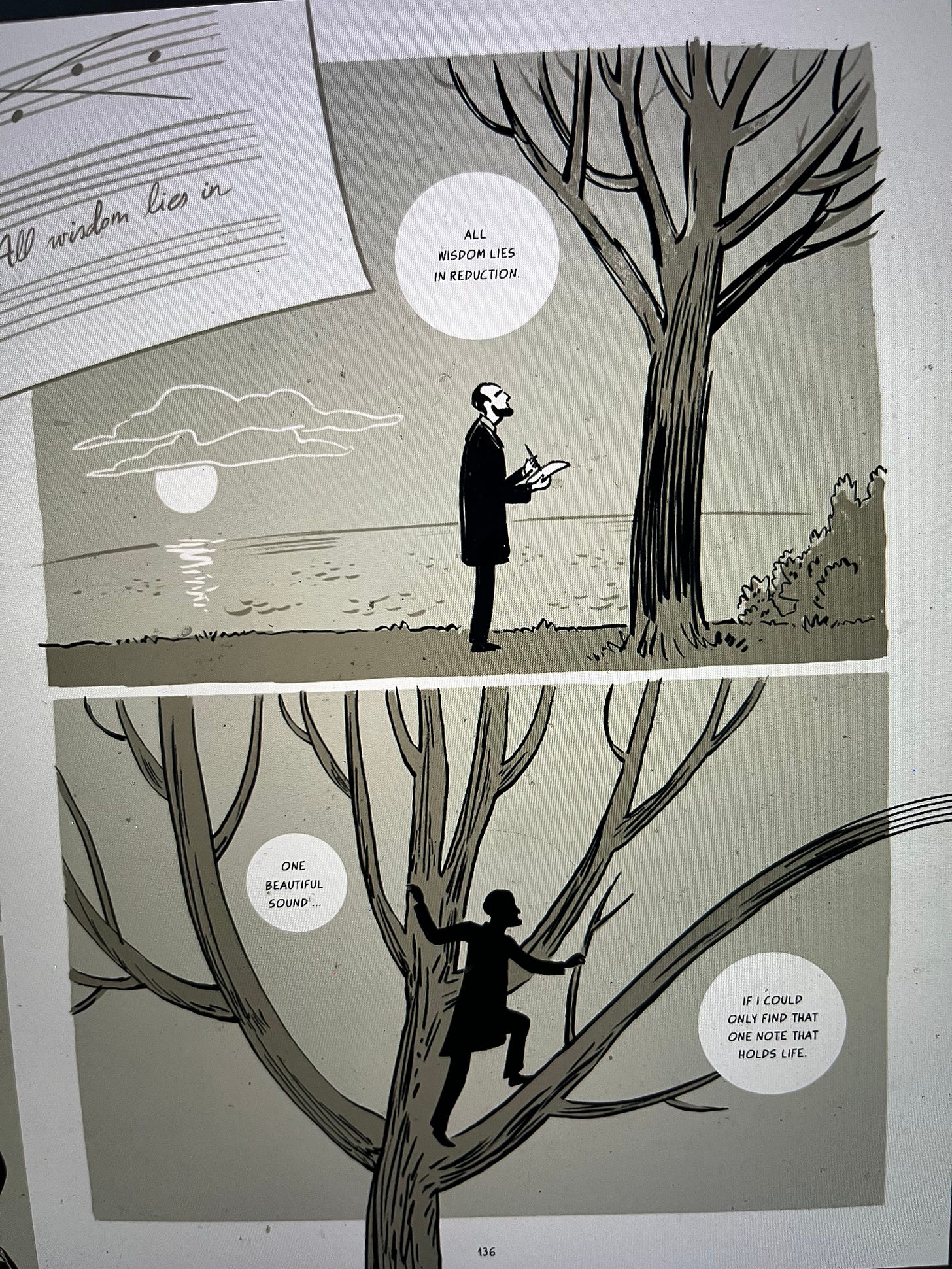Dear Friends,
Happy New Year. I write to you from London, where I am emerging from a week of bewildering jet lag. This morning is the first that I woke at a normal(ish) time after falling asleep at an ordinary(ish) hour. Given my general station of disorientation, instead of my usual Saturday ramblings, I’m excited to share with you an interview I conducted over the summer with the Estonian author and artist Joonas Sildre, the author of Between Two Sounds, a biography of Arvo Pärt.
Arvo Pärt is one of the world’s most performed composers (second only, and occasionally to John Williams, who composed the score for Star Wars, amongst other things). Pärt was born in Estonia in 1935, and his development as a composer emerged in the context of a long struggle with Soviet officials that eventually led to his immigration to Berlin. He is most famous for his distinctive style of composition called tintinabuli, which is inspired by the resonances of bells (tintinnabulum meaning bell in Latin). This simple, peaceful style involves two “voices,” one melodic and one triadic: one representing the human voice (frail, wandering, suffering) and one representing the divine voice (stable, present, loving). This style of composition emerged out of a period of eight years of silence in which Pärt did not compose, and draws on his conversion to Orthodoxy.
Between Two Sounds tells the story of Arvo Pärt’s life through the form of graphic novel, focusing particularly on the period of silence that led to Pärt’s distinctive and well loved style. (I attach one of his most beloved songs below). Sildre (who I interview today) created this visual biography with Pärt’s input, listening to the story of his life over many years. It is a beautiful project, that I’m proud to say I played a very small part in bringing to the English speaking world. The book was originally published in Estonian, but when I heard through some friends in publishing that the English rights were up for grabs I mentioned it to our books editor at Plough, who eventually acquired the rights. A few weeks ago, I was pretty proud to see that this book was an NPR nonfiction book of the year staff pick.
Who is this book for? I can think of many people: people who love music, people who are interested in soviet history, people who like graphic novels. As an educator myself, I think it would be a wonderful resource to help students engage with history (particularly the history of soviet countries between 1940-1980), and also to learn about one of the most important living composers. But beyond these more practical and pedagogical concerns, it is just.a beautiful book, a pleasure to read and to see (at the time I only had a digital copy, but I now have the book which is lovely). Particularly incredible were the pages where Sildre “depicts” silence. I read it over the summer on a rainy day, listening to Pärt in the background, and it was a pleasurable and edifying experience. I recommend it!
I encourage you to get your hands on a copy of the book! Plough has agreed to let me give away a few copies, which I will probably do on Instagram in the next few weeks. The book feels, somehow, very wintery to me. Very appropriate to January. Pärt’s music also feels very appropriate to this season of the year to me as well. If you want to listen to some of his music, you can try this playlist, or the one below:.
I am very thankful to Joonas Sildre for taking the time to speak with me. His conversation was calming, gentle, and thoughtful. I hope to share this interview eventually on my podcast, eventually— but need to revive the podcast first! I hope you, my generous subscribers, will enjoy this unedited version in the meantime.
Wishing you all a very happy new year!
Warmly,
Joy
Keep reading with a 7-day free trial
Subscribe to Joy Clarkson to keep reading this post and get 7 days of free access to the full post archives.





